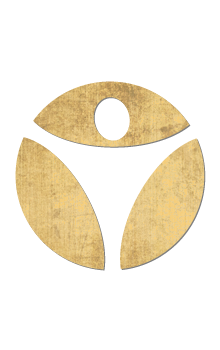Why is Yoga Great for Athletes?
- Updated on: April 29, 2022

Why Should Athletes Do Yoga?
Yoga is great for everyone to do, but each person can benefit from it in different ways. Even athletes, who exercise and move around on a regular basis, can especially benefit from a yoga practice. Athletes are constantly moving and using their muscles in very specific ways, but oftentimes, stretching and mindfulness do not always come into play. The problem with this is that many injuries can come from not properly maintaining and taking care of the body.
So, why is yoga helpful? Which athletes can benefit from a yoga practice?
Defining Athletes
When we say athletes, we are not just talking about the professionals, but all athletes. Whether you run marathons, do triathlons, exercise constantly, compete in local competitions, or play sports on a regular basis, yoga is for you. While professional athletes can also benefit from the practice, we at Body by Yoga work with all kinds of athletes, especially the non-professional ones. The majority of athletes are athletic because they love to be, and yoga can actually make it even safer and easier to continue and keep up with this.
Do Famous Athletes and Sports Teams Do Yoga?
What do Lebron James, Ray Lewis, Shaquille O’Neal, Aaron Rodgers, Torey Smith, Tom Brady, and Keith Mitchell all have in common? Every single one of these athletes does yoga, and they aren’t the only ones. Many sports players have a good yoga practice to keep their bodies healthy and their muscles flexible. Some teams even practice with all of their players! One of these teams is the Seattle Seahawks football team. That’s right; the entire team does yoga as part of their required fitness regimen. Another whole team that does yoga is the NBA’s Los Angeles Clippers who even have their own yoga coach to work with them! Many teams are beginning to incorporate yoga into their over exercise plan, and there is a reason. It works, and it helps keep the body happy and healthy.
Why Should Athletes Do Yoga?
So, this brings us to the question, why should athletes do yoga?
There are many reasons athletes should do yoga, just as there are many reasons that everyone should be doing yoga. To start, the stretches in yoga both help to increase flexibility and stabilize the muscles of the core and the lower body. Yoga is also very rejuvenating and can be a great way to give the body a break and a reset after intense exercise. It can help with strength building, recovery, stress reduction, better sleep, and can even help to avoid certain injuries. In addition, yoga promotes focus, stability, and balance. Plus, it helps to build up endurance and keep the body capable of doing more for longer.
So, how is it that yoga can help with all of this? Let’s take a look at the anatomy of an athlete to learn more about why yoga can be so beneficial for those who are incredibly athletic.
Did you know we have a whole youtube playlist full of yoga videos for athletes? Click here to check it out!
Anatomy of Athletes and Common Injuries
Let’s take a look at the anatomy of an athlete to learn more about why yoga can be so beneficial for those who are incredibly athletic. We will look into the most common injuries and the parts of the body they affect, but keep in mind there are many, many more.
- Muscles
Many athletes are prone to muscle injuries from the constant strain being put on them. The majority of muscle injuries actually take place during spots and similar activities.
Muscles can be pulled, strained, and even torn. While muscles can often heal themselves with rest and proper care, sometimes, these injuries can be permanent depending on the severity.
Strains are very common in athletes from the constant use– and often over use– of the muscles. The problem is, many athletes do not give the muscles proper time to heal themselves, and this can lead to worsening injuries in the long run.
Many different factors can affect the muscles as well. Even dehydration, which can happen rather often during activity out in the sun, can make the muscles more likely to get hurt. Muscle injuries are some of the most common injuries in athletes.
- Tendons
The tendons are the connective tissue that holds the muscles to the bones, allowing movement of the bones and limbs. There are many types of injuries when it comes to tendons, and the problem is that once a tendon is injured, it will never fully be the same, making it an easy target for another injury. Have you ever heard of tennis elbow or golfer’s elbow? Both of these are common tendon injuries from overusing them. Let’s look at tennis elbow, and what causes it. Though the name may suggest otherwise, there are many causes of tennis elbow. The name originates from playing tennis of course, but any constant use of the same tendons can cause tennis elbow. We have tendons in our elbows, and if we are constantly swinging our arms around in a repetitive fashion, it makes sense that the tendons may be overworked. This can also sometimes affect the forearms and wrists, but this is less common. Now, when the tennis player goes to do everyday tasks, the arm may feel weak and sore. The hands might be shaky. Just lifting up a cup of water may be more difficult. This is because the tendon is not working as it should be, making it harder to control the use and movement of the arms and hands.
This is only one of the many injuries that can happen to tendons. The achilles tendons are the longest in the body, starting at the heel bone and moving up to the calf muscle. Overuse of this tendon can cause a lot of pain and injuries, and this is a tendon we use everyday just to walk. Some common injuries to this tendon include tendinitis and even ruptures!
What does this mean? Let’s break down some of the most common injuries to the tendons:
- Ruptures- Ruptures are the tearing of tendons, and can mean either a partial or a full tear. As you can imagine, these are very painful since the tendons do so much for us! After a rupture, the tendons will always be much weaker and prone to injuries, though that doesn’t mean they won’t heal up. With proper support, medical attention, and even physical therapy, ruptures can be treated. Unfortunately, athletes may deal with ruptures more than the average person due to overuse of the tendons and sudden injuries.
- Tendonitis- This is inflammation of the tendons and can be caused by a variety of reasons, from overuse to genetics to even one major injury. This is seen often in athletes since the tendons require a lot of use and can be easily injured in an accident.
- Tenosynovitis- This is similar to tendonitis but affects the tissue lining surrounding the tendon known as the sheath. The sheath is made of soft tissue and keeps it separate from the fascia. Tenosynovitis is when this sheath becomes inflamed, preventing proper use of the tendon. This can be caused by infections and even arthritis, but in athletes, the common cause is once again from overuse and too much movement. Many sports and athletics require more movement than the body is used to, and eventually, the body can’t keep up.
- Tendinopathy- Similar to tendonitis and tenosynovitis, tendinopathy is often confused with the prior two. Tendinopathy takes longer to heal. The tendons are made of quite a bit of collagen fibers as well as elastin. Tendinopathy takes place when the tendons stop creating enough collagen protein to properly function. This can be caused by a number of reasons, but the most common causes are from overuse during sports and fitness activities. This makes athletes more prone to tendinopathy.
- Ligaments
While tendons hold bones to muscles, ligaments connect bones to other bones. You can see why they play such an important role in our movement. These are seen in the joints. The one you have probably heard of most often is the ACL (anterior cruciate ligament) but our bodies actually have more than nine hundred ligaments! Any of our ligaments can be injured. When you sprain a ligament, you tear or over-stretched it. This can take multiple weeks to heal depending on the severity. If you have ever sprained your ankle, you know the pain of a sprain, and any ligament can be sprained. Did you know you can even sprain your thumb?
- Fascia
The fascia is the connective tissue that surrounds the muscles, organs, and everything in between, keeping them safely in place. When the fascia is not stretched enough, it can harden and lock up, making it more prone to injuries. When you injure the muscles or tendons, the surrounding fascia can be hurt as well. Myofascial injuries affect both the muscles and the fascia (myo means muscle and fascial means fascia). Fasciitis is when the fascia is inflamed. The most common type of fasciitis is plantar fasciitis, or the inflammation of the plantar, or the tissue at the sole of the foot. When you constantly put pressure and strain on the plantar, this can flare up and cause plantar fasciitis. Anything from running to jumping, and everything in between, can cause this. It shows up often in older adults after a lifetime of use, but younger adults may find they are suffering from this as well, especially if they are athletes.
- Bones
Bones can be injured quite often when it comes to sports and athletics. Any bone can be broken from a sudden force, but there are many other types of bone injuries as well.
Fractures and breaks are technically the same thing. Stress fractures are tiny cracks in the bones, and these are commonly seen in athletes from overuse and sudden or ongoing force. Fractures can take weeks to months to properly heal. Though bones are weaker while healing, they most often return back to how they were before the break.
Shattering a bone is much different and causes multiple breaks within the bone, taking longer to heal. They are also often weaker after the fact, depending on the severity of the injury.
- The Brain
Our brains are so important and can be damaged during sports. While anybody can receive a concussion, athletes are very likely to. The problem is that many concussions in athletes go unreported and undiagnosed, meaning that the athletes will then continue to participate in their sport or fitness routine without proper healing time.
One study interviewed a group of athletes to find out how many had experienced symptoms after a blow to the head without being diagnosed with a concussion. The results found that nearly one third of these athletes had previously suffered a form of a concussion without seeking medical attention.
Unfortunately, there is a brain disease seen in some football players after years and years of playing and being thrown around over and over. With constant blows to the body, the brain can suffer minor injuries that go undetected until later in life. This disease is known as Chronic Traumatic Encephalopathy (CTE) can cause a range of symptoms such as, memory problems, changes to personality, confusion, and even aggression. (Veliz P, et. al)
Yoga Benefits for Athletes
Stretching
Now that we have looked at the anatomy of an athlete and the many ways it can be injured, let’s talk about how yoga can help to prevent and even help to heal some of these injuries.
Why is yoga so important for athletes? How is it different from other other common exercises?
Oftentimes, when it comes to sports and athletics, the body is prone to repeated force and movement. With that said, if you are an athlete, ask yourself if you have the proper time to rest and reset? Yoga does not require a lot of force on the body.
It is often gentle and allows the body to have a break and rejuvenate itself. Yoga also promotes flexibility. This is important for many reasons. If an athlete does not have proper flexibility in the muscles, they will be more prone to pulling, overextending, and even tearing them.
In yoga, the muscles receive a nice deep stretch. This is different from a quick stretch before a game or athletic event because it requires spending more time with each pose.
Oftentimes, when athletes stretch right before jumping into a big game or event, the muscles can receive minor tears that can become worse after pressure is put on them.
Let’s say, for example, that a marathon runner does a few quick stretches before the race. This runner may twist side to side, forcefully touch their toes quickly, and do quick stretches with the arms and shoulders.
While these stretches can be very helpful when done properly, if this runner did them haphazardly without knowing the safe way to do them, the runner could then suffer tears and a variety of other injuries. Now, let’s say that this runner had the proper knowledge of how to stretch and did yoga on a regular basis.
The runner would be more likely to take the time easing into each stretch or pose and using the muscles correctly. Now, the muscles would be more warmed up and the fascia would be nice and open, preventing as many tears and strains.
Stretching is important, but doing these stretches correctly is even more important. This is one of the many reasons why having an ongoing yoga practice can really help an athlete in the long run.
Having a proper yoga practice also helps to strengthen and stabilize the ligaments and tendons. Yoga is also a great way to help break down scar tissue, increasing mobility and decreasing pain.
Breathing
When it comes to breathwork in yoga, athletes can find many benefits from the practice. Breathing is important and, because it is an automatic brain function, like the heartbeat, it is something we do naturally. The problem is that many people do not realize that we can do breathing exercises outside of this.
This can strengthen the muscles of the abdomen and core, relieve stress stimulation and calming the parasympathetic nervous system. When we practice breathing techniques, we increase the oxygen all throughout the body, increasing our energy levels, and even strengthening endurance.
One study looked into the effect of diaphragmatic breathing on oxidative stress in athletes. The study showed that intense exercise can create more cortisol, thus intensifying one’s stress and decreasing the amount of antioxidants in one’s body. (Martarelli, et. al)
This makes a person more prone to stress and also decreases function of the immune system. The study showed that deep breathing both decreased cortisol levels and stress, and increased antioxidants such as melatonin. These findings help to see just some of the many reasons why breathing is so important for an athlete (and for everyone for that matter).
Even if you just like to workout a lot at the gym, breathing techniques can be helpful for you!

Mindfulness
Mindfulness is the practice of being aware of the present moment, increasing your awareness of oneself, one’s concentration/ focus, one’s mindset and mental facilities, and one’s physical body. When athletes practice mindfulness techniques, they can become more focused during athletics and more aware of the amount of physical and mental stress they are experiencing.
One study, that took place in Germany, used a type of mindfulness known as Berlin Mindfulness-based Training for Athletes, also known as Berliner Achtsamkeitstrainigzur Leistungsoptimierung (BATL). This is only one of many mindfulness strategies that athletes are now beginning to use. The study included bachelor students of sports medicine and included a control group. The results showed that at the end of the study, mindfulness was greatly increased by the group receiving BATL. These mindfulness techniques were also found to assist the text subjects when dealing with stress. (Jekauc, D., et. al)
Another study looked at the effects of mindfulness on those who had suffered from mild traumatic brain injuries and/or symptoms post concussions. The group of test subjects met weekly for ten weeks to practice mindfulness-based stress reduction. Results found some improvement on quality of life, memory, and even self-efficiency. (Azulay J, Smart, et. al)
Types of Yoga and Which One is Best for You
There are so many types of yoga practices in the world that it is quite impossible to list them all. However, we will look at the most common, and best practices for athletes. Depending on your personal needs, each type of yoga will have different benefits that could be useful for you.
Below, we will look at some of the most common types of yoga that would be beneficial for athletes, and how they differ. You might find that one of these practices would be best, or maybe you would benefit from a variety of them.
- Gentle, Restorative, and Yin Yoga- For athletes looking for a practice for recovery, it would be good to try gentle yoga, restorative yoga, or yin yoga. Restorative yoga is great for recovery while yin yoga focuses more on deep tissue stretches of the body. Both practices involve poses on the mat that are held for longer periods of time and can increase relaxation while decreasing stress and physical pain.
- Vinyasa Yoga– For athletes looking for more movement in yoga to create more flexibility and flow, a good practice to try would be vinyasa yoga. This practice links poses with the breath to flow from one to the next.
- Power Yoga-For those who are athletes looking for more of an exercise and muscle building/ strengthening, power yoga is a more intense practice that will definitely make you sweat.
Do some research on local studios and learn what types of yoga they offer. It is also good to reach out to studios with any questions you have about what practices they teach and if they are properly suited to be working with athletes. Many studios will be up for the task, but it is important to make sure you are receiving the care and guidance you need.
When to Talk to Your Instructor and Modifications for Poses
Remember, when starting a new yoga practice, it is important to let your instructor know of any past injuries or questions you might have. If certain poses are not safe for you to do, you will be given alternatives to try. If you need to use props, such as straps or blocks, your teacher can walk you through what you will need and how to use them.
Yoga Videos for Athletes
There are many videos online that can walk an athlete through a beginner’s practice. You can check youtube, Vimeo, and many other websites to discover which videos work best for you.
We offer many online resources for athletes looking to start a yoga practice, and a variety of videos as well. Checkout our youtube page here!
The Best Body By Yoga Resources for Athletes
You can take our Yoga Edge training which is specifically designed for athletes and sports enthusiasts.
In addition, we also have free tutorials and workouts for athletes here.
References: Azulay J, Smart CM, Mott T, Cicerone KD. A pilot study examining the effect of mindfulness-based stress reduction on symptoms of chronic mild traumatic brain injury/postconcussive syndrome. J Head Trauma Rehabil. 2013 Jul-Aug;28(4):323-31. doi: 10.1097/HTR.0b013e318250ebda. PMID: 22688212. Jekauc, D., Kittler, C., & Schlagheck, M. (2016, December 30). Effectiveness of a mindfulness-based intervention for athletes. Psychology. https://www.scirp.org/journal/paperinformation.aspx?paperid=73192. Martarelli, D., Cocchioni, M., Scuri, S., & Pompei, P. (2011, February 10). Diaphragmatic breathing reduces exercise-induced oxidative stress. Evidence-Based Complementary and Alternative Medicine. https://www.hindawi.com/journals/ecam/2011/932430/#discussion. Veliz P, Eckner JT, Zdroik J, Schulenberg JE. Lifetime Prevalence of Self-Reported Concussion Among Adolescents Involved in Competitive Sports: A National U.S. Study. J Adolesc Health. 2019 Feb;64(2):272-275. doi: 10.1016/j.jadohealth.2018.08.023. Epub 2018 Nov 5. PMID: 30409755; PMCID: PMC6339843.
Recent Posts
Categories
Related Articles
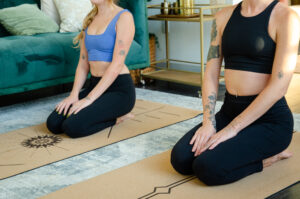
Breathing technique to improve your yoga practice
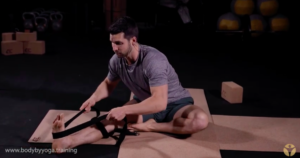
Good Stretch For Lower Back And Hamstrings
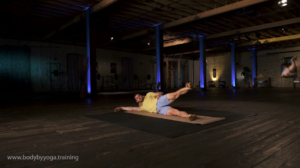
Stretching and Strengthening your hips
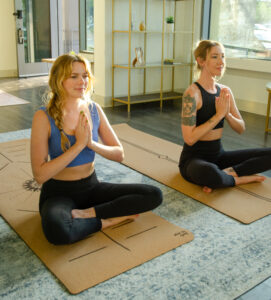
Hatha vs Power yoga
Related Articles

Good Stretch For Lower Back And Hamstrings
This stretch can be done before or after a workout. It’s simple, but very effective. Stretching your legs can help alleviate back pain as well.
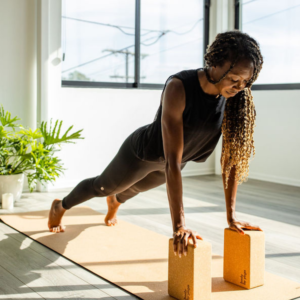
Taking the next step to more challenging yoga
Yoga is for anyone at any level. We want everyone to feel challenged in their practice so we’ve created all-inclusive classes that will help improve
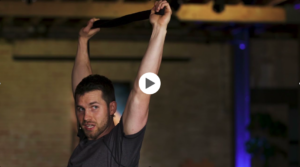
Mini sequence for beginners
We created this video for a quick sequence to stretch and build strength in your hips and shoulders. We start the video touching on
